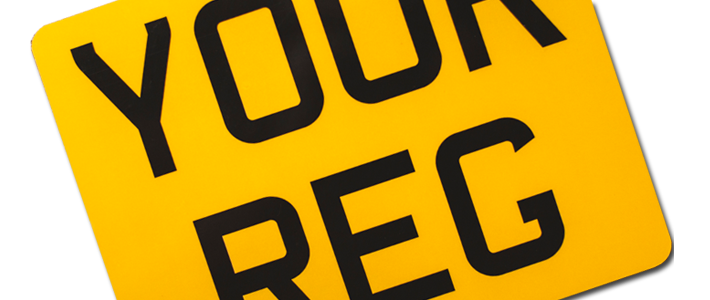
Please note: We are a plate maker, we do not sell vehicle registration numbers.
Motorcycle number plates from Plates Express are designed and delivered with you in mind. Every element of our service is created around you, enabling you to discover your perfect number plates. We know the importance of longevity and quality which is why our plates are built to last. We give you the freedom to create bespoke plates in no time at all and that’s what makes our service so unique.
All You Need to Know About Motorcycle Number Plates
Whether you need new motorcycle number plates for the road or for shows, they are there to serve a purpose. Take your bike on the road and you’ll need to ensure they are road legal but beyond that, they are there to make a statement. When you design plates around you and your personality, you can be sure that they will make an impact. Of course, you will need to be mindful of DVLA regulations, but we take care of that with our plate builder.
Essentially, your plates are going to add to your ride, simply because they complement your passion for hitting the open road. It might surprise many, but our plates add to the overall look of your bike, adding to the charm and elegance. So, as you begin your journey seeking new plates, remember to create something that works for you and your bike.
Trust Our Road Legal Motorcycle Number Plates
At Plates Express, we understand the importance of legality when it comes to motorcycle number plates. That’s why we offer road legal plates that meet the stringent standards set by the DVLA and British Standard regulations. Our plates are not only legal for road use but also versatile enough to be used for shows, gifts, advertising, and various other purposes. However, let’s not forget the importance of ensuring we meet DVLA and British Standards. As a result, we make sure that our plates meet the standards that have been put in place by both the DVLA and British Standard (BS AU 145e) regulations. The standard size for a motorcycle number plate is 228mm x 178mm and there are some vital requirements that you must follow if your bike was manufactured after 2001:
Characters must be 64mm tall
Characters (except the number 1 or letter I) must be 44mm wide
The character stroke (the thickness of the black print) must be 10mm
The space between characters must be 10mm
The space between the age identifier and the random letters must be 30mm
The margins at the top, bottom, and side of the plate must be 11mm
Vertical space between the age identifier and the random numbers must be 13mm
For motorcycles manufactured between 1st January 1973 and 1st September 2001:
Characters must be 89mm tall
Characters (except the number 1 or letter I) must be 64mm wide
The character stroke (the thickness of the black print) must be 16mm
The space between characters must be 13mm
The space between the age identifier and the random letters must be 38mm
The margins at the top, bottom, and side of the plate must be 13mm
Vertical space between the age identifier and the random numbers must be 19mm
For classic motorcycles manufactured before 1st January 1973:
Characters must be 79mm tall
Characters (except the number 1 or letter I) must be 50mm wide
The character stroke (the thickness of the black print) must be 14mm
The space between characters must be 11mm
The space between the age identifier and the random letters must be 33mm
The margins at the top, bottom, and side of the plate must be 11mm
Vertical space between the age identifier and the random numbers must be 19mm
We adhere to the legal dimensions of motorcycle number plates ensuring that every plate we produce is compliant with the law. With Plates Express, you can ride with confidence, knowing that your plates are both stylish and road legal.
Why Our Plates Are The Best
What makes our motorcycle number plates stand out? It’s our plate builder, which empowers you to design your own plates with fonts, emblems, 4D Gel, and 3D font options. Whether you prefer a classic design or a bold statement, our customisation options allow you to create a plate that reflects your unique style and personality.
Our plates are crafted from premium materials, ensuring durability and longevity. Designed to withstand the rigours of the road, our plates are built to last, making them a worthy investment for any rider.
How We Get It Right
It’s the way we make the entire process right, at every single step. Quality materials make a difference, our rapid delivery means you get your plates in quick time and the over experience is simple from start to finish. The streamlined experience is the reason why our customers keep on returning to us and that allows us to meet your every need. Our dedication sets us apart, and that’s why our plates are always the perfect fit.
Why Choose Us?
From our low prices to the quality of our products, we do everything right. We focus on our customer service and seek new ways to offer much more, giving our customers every reason to choose Plates Express. As leading providers of motorcycle number plates, we make sure that we go above and beyond because doing it any other way is not an option.
It’s Time to Order
Ready to transform your bike’s style with our premium motorcycle number plates? Place your order today and experience the difference with Plates Express. Ride with confidence, knowing that you’re sporting the best in the business. So take the time to place your order and discover the Plates Express difference today.


